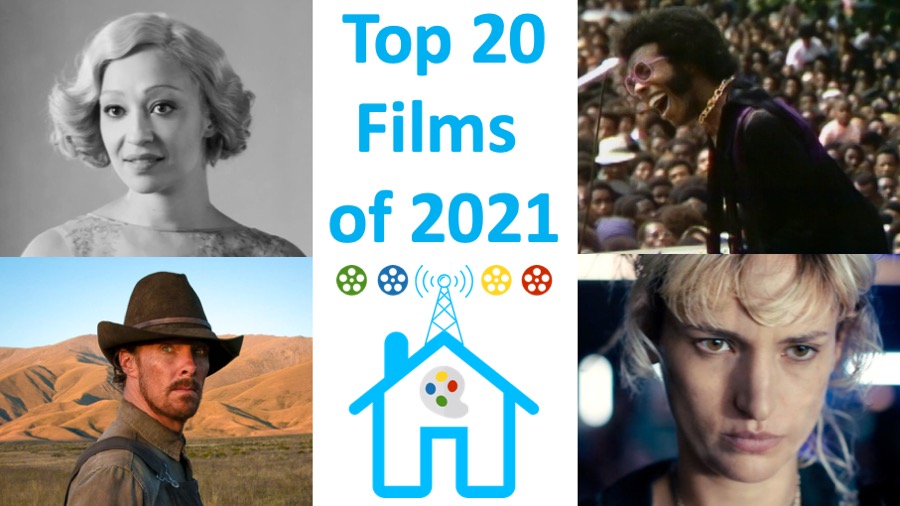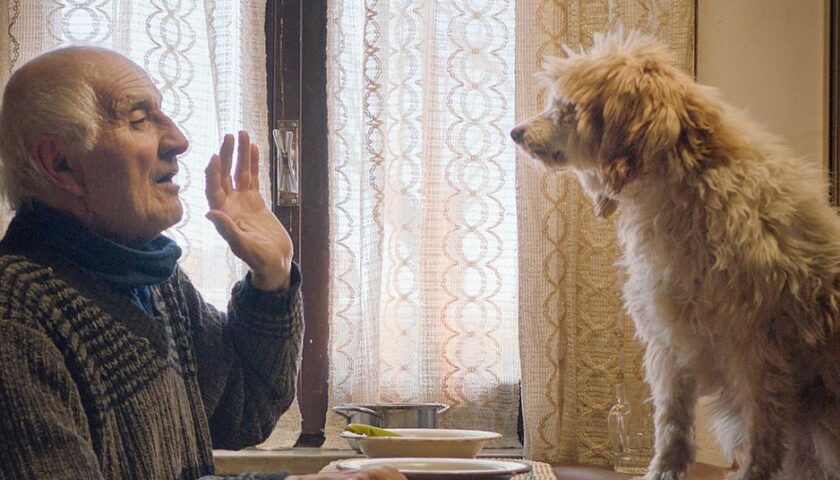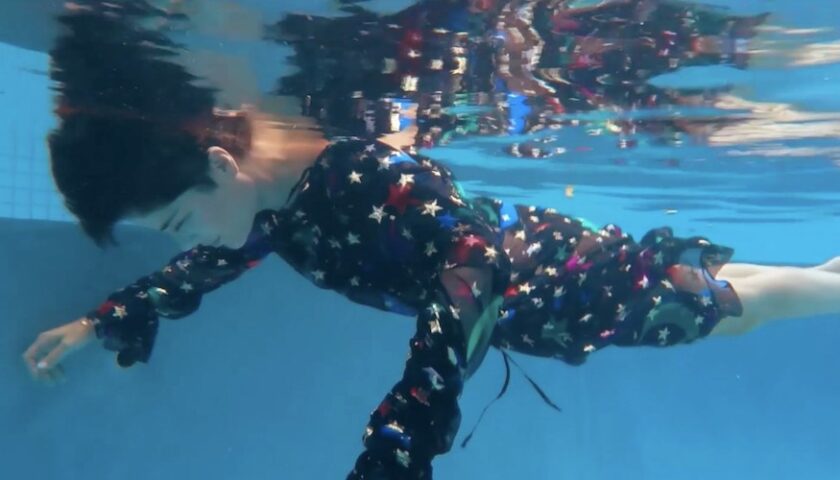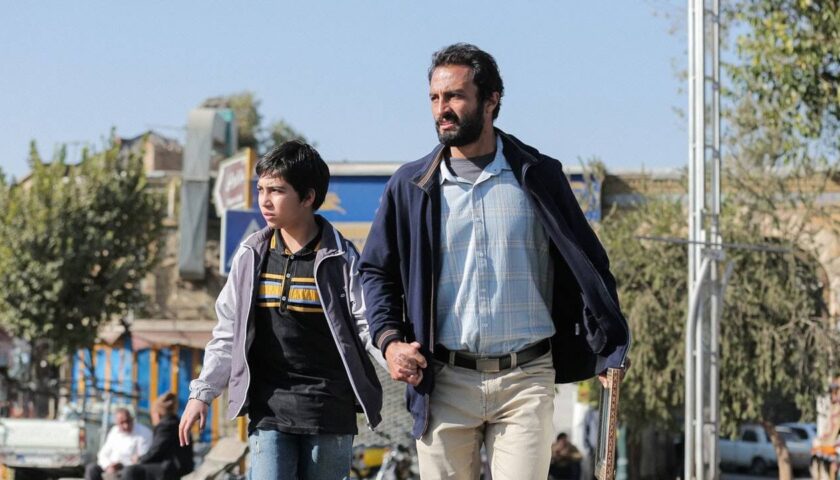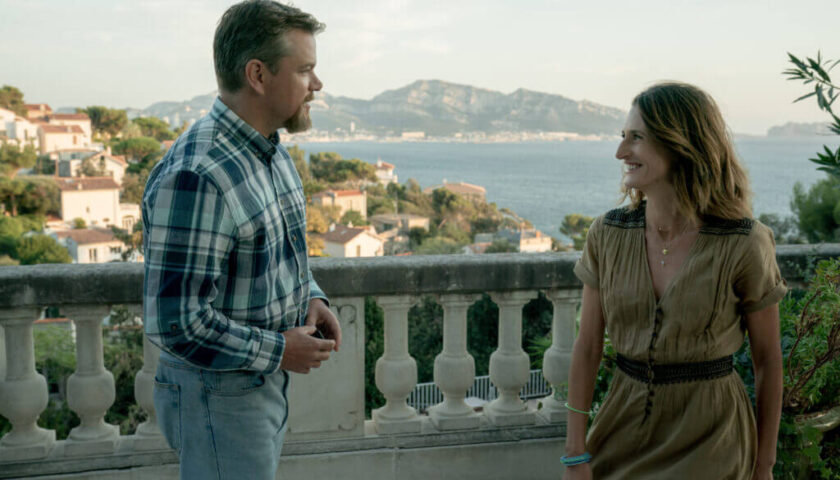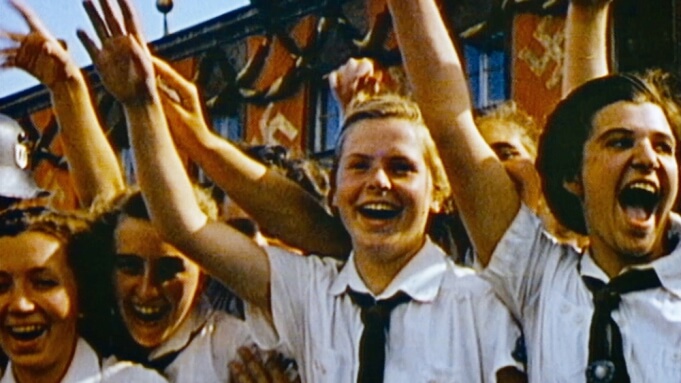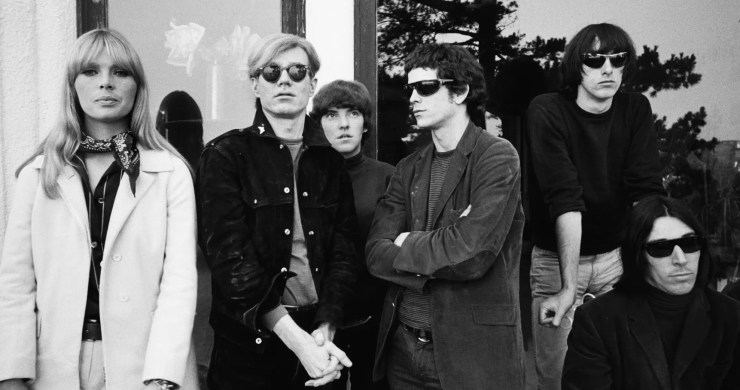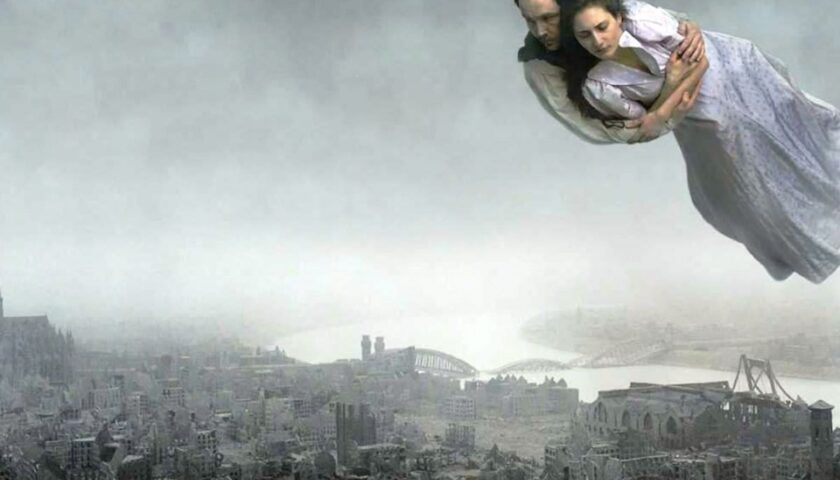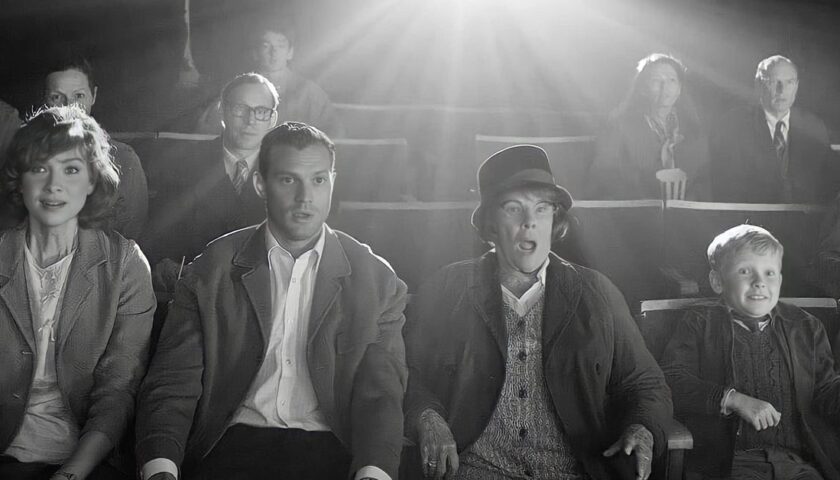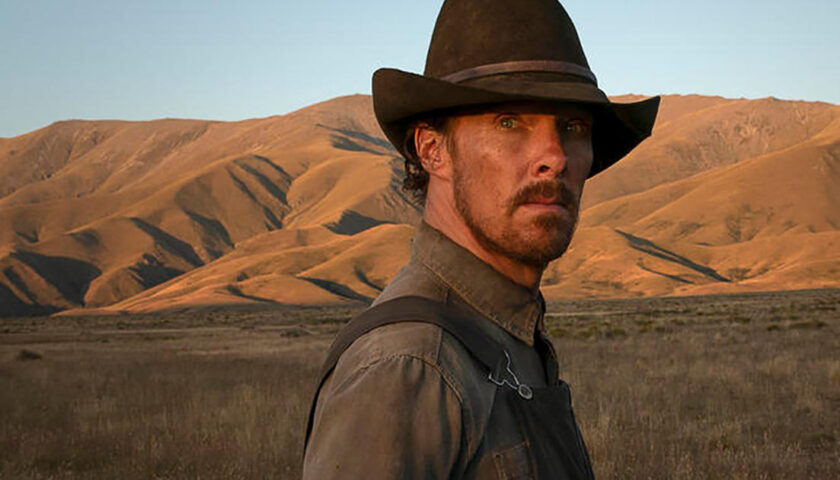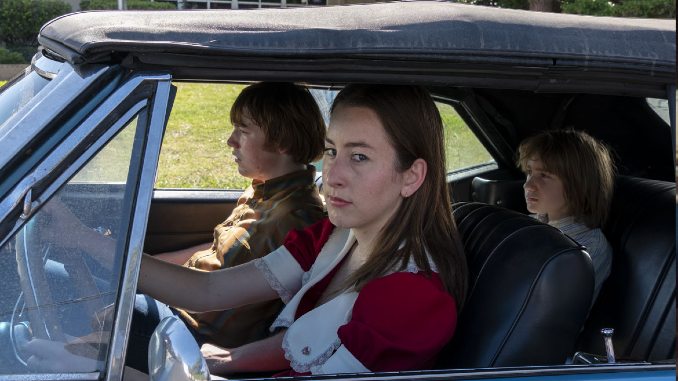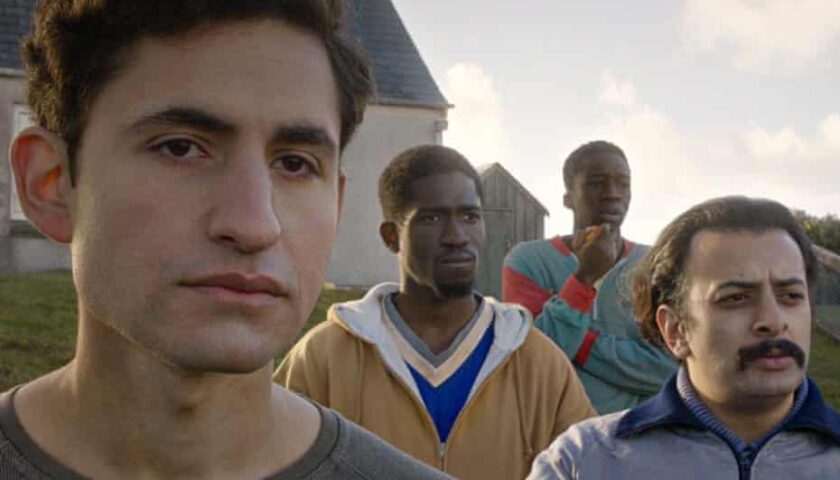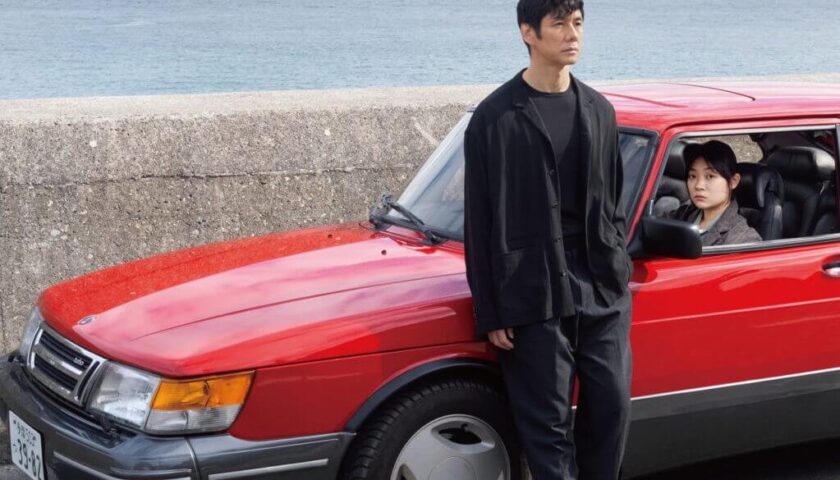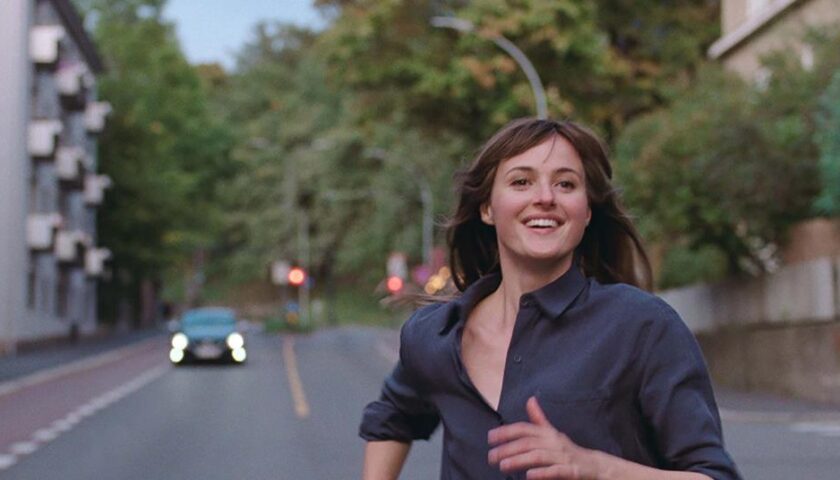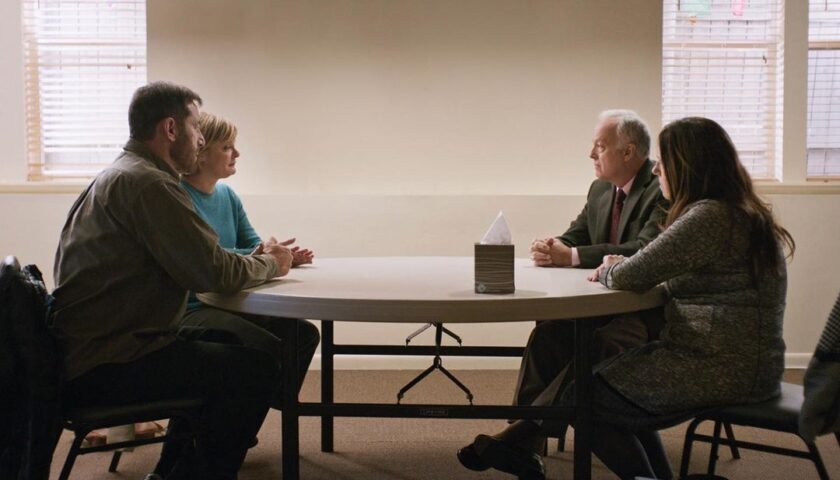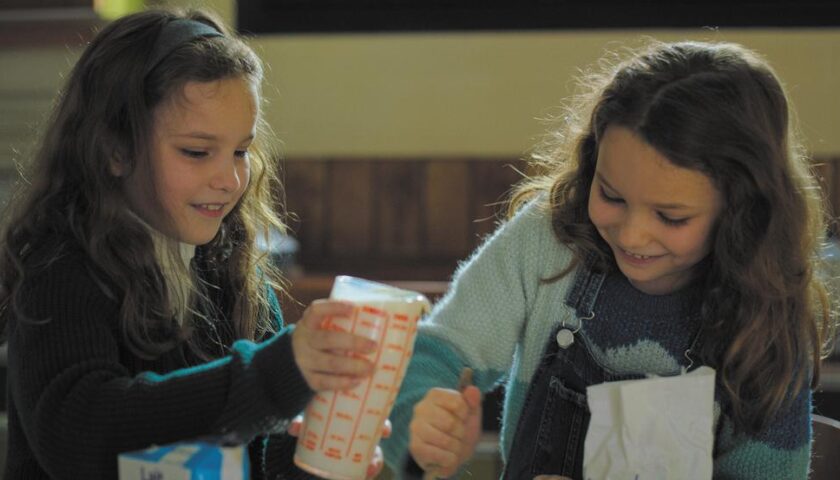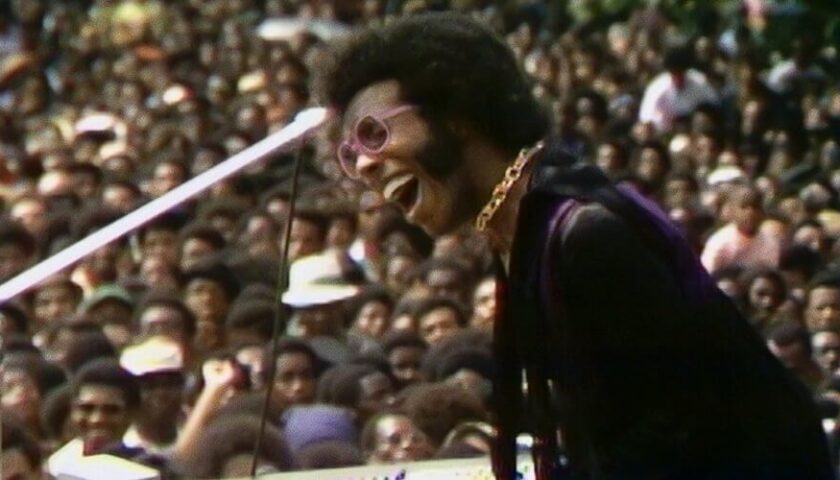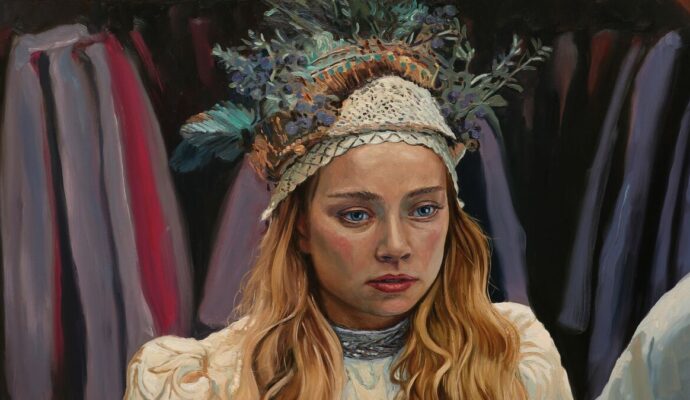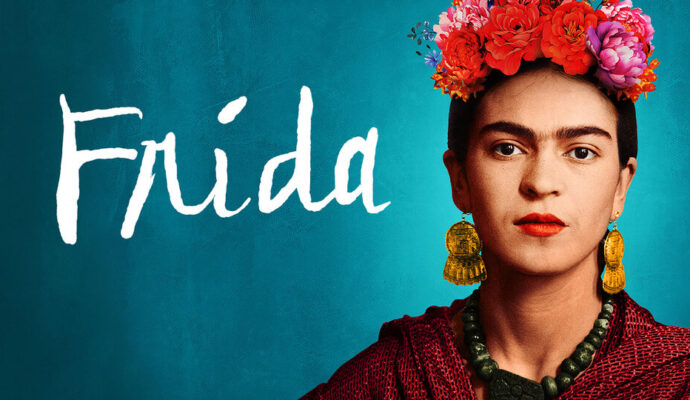Like most folks, 2021 was not our easiest year on record, but we did return to movie theatres! For that, we’re infinitely grateful. Let’s hope for more progress and less heartache in 2022 and for three steps forward to combat the inevitable two steps back.
Speaking of numbers, we caught plenty of flicks – via film festivals, frequent trips to local cineplexes, and streaming at home – and revisited the annual puzzle/beloved exercise of narrowing down our lengthy list of favorite films to just 20.
Here they are: Art House Film Wire’s Top 20 Movies of 2021!
20. “The Truffle Hunters” – What is a truffle, and how do you hunt for one? Well, a truffle is an underground fungus that doesn’t run, but it can undoubtedly hide, and directors Michael Dweck and Gregory Kershaw seek out the very few capable individuals – a group of recluses – who thrive in this eccentric profession. In this minimalist documentary, Dweck and Kershaw do not formally introduce these generally anonymous huntsmen, who slog over Piedmont, Italy’s steep gradients, muddy roads, and leaf-littered forest floors, as they search for prized, evasive nuggets. The film drops the audience into a world of tradition and trade, but without explanations or frameworks. We must rely on osmosis and keen observation to learn anything because the hunters – and at least two are octogenarians – have all the answers but aren’t willing to hand over the Cliff Notes. Geez, who are these guys? Let’s watch this movie again!
19. “Introducing, Selma Blair” – Selma Blair owns 80 proud acting credits on IMDB.com – including “Cruel Intentions” (1999), “Legally Blonde” (2001), “Hellboy” (2004), and “Hellboy II: The Golden Army” (2008) – but you’ve never seen her in a role like this. She plays herself in a documentary that chronicles her excruciating physical and emotional fight against Multiple sclerosis. Selma gives director Rachel Fleit carte blanche, as the Gen-X actress wrestles with the toils of walking, speaking, staying awake, attempting to preserve an accustomed relationship with her young son Arthur, and coping with vigorous, invasive experimental stem-cell treatments to combat this cruel, disabling disease. We may not have known the behind-the-scenes Selma before she became sick, but you’ll deeply care for the woman standing in front of Fleit’s camera.
18. “Shiva Baby” – Danielle (Rachel Sennott) isn’t keeping up with the Joneses these days, but she’ll need to stay one step ahead of her parents, her best pal Maya (Molly Gordon), distant aunts and uncles, five dozen other acquaintances, and her sugar daddy in a dandy and demanding comedy debut from Emma Seligman. Sennott is marvelously convincing as a stressed-out young woman with too many moving parts spinning in her head and standing in front of her. Danielle attempts to find solace – and trap doors – from sticky conversations, double-takes, and unadulterated embarrassment during a period of mourning, a shiva. (Her uncle’s second wife’s sister died.) Shot primarily at one location, Danielle needs an escape, but chances are that you’ll walk away from Seligman’s movie with a big smile and a few (more) strands of gray hair.
17. “A Hero” – Asghar Farhadi is a master at weaving intricate, knotty threads that snare his characters into stressful circles, especially within the confines of ordinary family homes. In 2021, Farhadi crafts another bold picture with “A Hero”, and here, our protagonist (Amir Jadidi) attempts to thread a needle to restore his reputation. Rahim (Jadidi) receives a short, temporary release from prison, but tells a lie. If all falls into place, Rahim will be portrayed as a Good Samaritan (maybe, a hero), and he might finally find the law on his side. Hey, what could go wrong? This cinematic yarn will bind audiences with collective dread and unwanted, uncomfortable pits in our stomachs, but maybe the predicament will resolve itself. It’s possible, but you know that old saying: Oh, what tangled webs we weave…
16. “Stillwater” – Stillwater, Okla. resident Bill Baker (Matt Damon) repeatedly travels overseas to Marseille and finally decides to make France his home, but he feels as out of place as a snowball sitting on a tropical island. Tom McCarthy’s culture-clash drama is part-character study, part-crime thriller, and part-family drama. Fans of “The Secret in Their Eyes” (2009) will appreciate McCarthy’s movie, as “Stillwater” also defies convention and plays with pace and genres, which drive the unexpected narrative. Ultimately, both locales impact one man, an old soul who doubles as a new traveler.
15. “Passing” – By random chance or perhaps fate, high school friends Irene (Tessa Thompson) and Clare (Ruth Negga) reconnect at a posh New York City restaurant as 30-somethings. They explore their life choices that afternoon and beyond in Rebecca Hall’s first feature film, an adaptation of Nella Larsen’s 1929 novel. The story dives headfirst into identity and race, as Irene quickly discovers that Clare has been passing as a white woman for years. Filmed in a rich black and white, Hall captures the big-band sights and sounds of the 1920s as well as the rigid racial lines of the period, ones that Clare has routinely crossed without consequences. She, however, might discover what she’s lost.
14. “Final Account” – Some are ashamed. Some are in denial. One is defiant. They are elderly German and Austrian men and women who share their recollections of life at home during World War II – and the years leading up to it – in Luke Holland’s sobering documentary. In 2008, Holland, who passed away in 2020, started conducting interviews with the said senior citizens – from mostly small communities like Wilhelmshaven, Bernburg, and Brandenburg – who watched fascism unfold in front of their eyes. In addition to the revealing, innermost conversations, Holland adds footage from Hitler Youth camps, and the film boils and broils into an unsettling cinematic concoction and a glaring conclusion: tyranny can quickly rise on a foundation of apathy.
13. “The Velvet Underground” – This iconic New York City rock band began its climb to fame via Andy Warhol’s support during the mid-to-late 1960s, and director Todd Haynes aptly takes an industrial, artistic approach to frame his documentary. Visually, the film resembles a black and white multimedia exhibit in a modern art museum. Haynes frequently divides the frame and simultaneously features multiple snippets and clips, like the introduction to “The Brady Bunch” on LSD. It’s a trip! Just like this unlikely quartet’s – Lou Reed, John Cale, Moe Tucker, and Sterling Morrison – musical voyage, and German model/singer Nico also plays a critical role in the group’s first album. Still, in this doc, individual songs are less important than the avant-garde musicians’ initial connections and innovative, experimental collaboration.
12. “About Endlessness” – Roy Andersson’s unique on-screen perspective is back, as he devotes a series of peculiar sketches that present humanity’s everyday collisions with modern society. A deliberately bland, brown color palette, stiff deliveries by the (mostly) amateur actors, and bleak, minimalist sets run throughout the film’s 78-minute runtime. “About Endlessness” feels like a surreal trip to Whoville, if the collective Who-population was in dire need of Prozac, and their surroundings – although cartoonish – are devoid of whimsy. Still, Andersson’s core observations are soaked with the truth. Repeat viewings are required.
11. “Titane” – Julia Ducournau’s midnight madness, art-house flick – about a car model’s (Agathe Rousselle) baffling trek – is impossible to predict, scene to scene, moment to moment. Rousselle’s and Vincent Lindon’s performances, a spellbinding score, and a mind-bending concept from a David Cronenberg fever dream yank us all over a highway to a chaotic and claustrophobic hell. Ducournau pushes the pedal to the metal, as we race at 300 km/h, but she repeatedly brakes to observe intensely personal themes like sexual objectification, parent-child strife, and gender identity through a narrative that you couldn’t begin to dream up, even if you hired 100 writers, philosophers, artists, and psychotherapists and sent them on a 30-day hallucinatory retreat. It’s a horrifying ride. Buckle up!
10. “Belfast” – To open the “Belfast” TIFF 2021 premiere, Kenneth Branagh said, “I’ve been waiting and wanting to tell this story for 50 years, and over that time, I have repeatedly heard the beautiful, cacophonous noise of this city in my head.” He sets his semi-autobiographical movie in Aug. 1969, during the early days of the Troubles, a conflict between Protestants and Catholics. Although this gorgeously-filmed black and white picture features violence, looting, and barbed wire stacked on cobbled streets, the love of family, a charismatic nine-year-old boy (Jude Hill), welcome supporting performances from Jamie Dornan, Caitriona Balfe, Ciaran Hinds, and Judi Dench, along with a joyous soundtrack from Van Morrison won this critic over. Sure, Belfast has a messy history, but Branagh may have just become the city’s greatest tourism ambassador, as he majestically frames countless shots with the meticulous precision of a scientist filled with joy and nostalgia.
9. “The Power of the Dog” – On March 27, 2022, Benedict Cumberbatch deserves to stride up the Dolby Theatre’s steps to the stage and collect a Best Actor Oscar for his commanding performance as Phil Burbank, a spiteful, heartless cattle rancher who vomits resentment and vitriol towards anyone who isn’t a steer. It’s 1925 Montana, and although folks like Phil’s brother George (Jesse Plemons) drive gas-powered carriages from the Gatsby era, Jane Campion constantly fills the screen with desperation, desolate browns of mountainous rock and prairie grass, and a drafty homestead that call back to time-honored westerns and cruel and crafty Darwinism.
8. “Licorice Pizza” – Paul Thomas Anderson couldn’t decide on a title for his movie, but he landed on “Licorice Pizza”, the name of a Southern California record-store chain, and during a Nov. 10, 2021 Variety interview, he said, “It seemed like a catch-all for the feeling of the film.” And how! Anderson’s hang-out comedy – set in 1973 – is filled with a collection of oddball happenstances driven by an industrious 15-year-old high-school student/businessman (Cooper Hoffman) and his crush on a directionless 25-year-old (Alana Haim). Unexpected astonishments, nonchalant pacing, and the coolest soundtrack since “Guardians of the Galaxy” (2014) act as a hypnosis of sorts, and first-time actors – Hoffman and Haim – cruise along with the script’s groovy (and sometimes purposely uncomfortable) vibes in this weird, winding journey.
7. “Limbo” – Omar (Amir El-Masry), a 20-something Syrian refugee, wishes to reside in the U.K., but he’s stranded on a desolate Scottish island while waiting for his paperwork to clear. We live in a world of instant gratification, but the United Kingdom’s official “like” on his request doesn’t seem imminent, especially when his friend Farhad (Vikash Bhai), an Afghanistan native, has been stuck at this far northern outpost for 32 months. Ben Sharrock’s dramedy takes full advantage of the great outdoors surrounding this sparsely-settled community – sitting on the 57th Parallel – with constant shots of barren, coastal grasslands that may resemble Washington’s Palouse commingled with gloomy, dormant volcanic buttes. No question, Omar’s somber, stoic mood reflects this lonely place, as El-Masry delivers a compelling, restrained performance, but yes, “Limbo” does have comedic elements too. In fact, a quirky dance scene with Hot Chocolate’s “It Started With a Kiss” opens the film, but Sharrock’s picture is primarily about the immigrant experience, where a numbing waiting game and reflection about one’s self-worth are the built-in conflicts.
6. “The Daughter” – Irene (Irene Virguez) – a pregnant 15-year-old – forges a pact with a 40-something childless couple, Javier (Javier Gutierrez) and Adela (Patricia Lopez Arnaiz), as the three commit an elaborate deception. Irene pretends to run away from a juvenile detention center – where she resides and Javier works – so she can live in their massive, isolated home and carry her unwanted pregnancy to term without anyone else knowing. Irene would then bequeath her baby to Javier and Adela. In a Sept. 13, 2021 TIFF interview, director Manuel Martin Cuenca says, “At points, we were calling (the pact) a crystal agreement because it really was an impossible agreement. At some point, it’s going to break. It’s going to fall apart. Why? Because emotions are involved.” Yes, this arrangement is a win-win for both parties, but it’s also a charade built on a foundation of deceit. Javier and Adela’s house sits on a precipitous, intimidating mountain range in Spain’s Jaen Province, and fittingly, Cuenca’s jaw-dropping thriller takes razor-sharp, hairpin turns that will trigger whiplash.
5. “Drive My Car” – Trauma can invade one’s life in an instant, persist for a minute or perhaps a few startling seconds, but the recovery from the distressing event could carry on for years. Ryusuke Hamaguchi models the aforementioned emotional feature of the human condition in the construction of his film. Yusuke (Hidetoshi Nishijima) – a successful stage actor – suffers a devastating personal loss early in the 1st Act. Actually, Hamaguchi includes enough drama for an entire movie within the first half hour of his 179-minute picture. After two aching years, Yusuke leaves Tokyo for Hiroshima to direct a play, and the distance and this city’s history are metaphors for distraction and healing. The narrative’s relaxed tempo offers room for our protagonist to express his regrets and develop a bond with his 20-something driver, Misaki (Toko Miura). Sometimes, one has to reach for help or at least connect with a friend to pull through seemingly impossible times, and perhaps, hour-long commutes in a Red Saab might be a therapeutic “vehicle” for Yusuke.
4. “The Worst Person in the World” – Julie (Renate Reinsve) is a beautiful and bright 20-something living in the prosperous city of Oslo. This charming, educated woman could blaze any career path that she chooses, and just about any single man would trip over himself for a first date. However, too many options in life and love can be a stifling, paralyzing problem in the 21st century. Joachim Trier captures this theme, but for storytelling sake, he pares down Julie’s choices to offer an awfully compelling and accessible romantic drama about embracing the here and now…or looking elsewhere. What is the correct answer? It’s all about perspective, gut feelings, needs, wants, and timing, as Reinsve and Anders Danielsen Lie navigate a likable, loving, modern-day couple who hopefully dodges roadblocks and avoids shortcuts that Trier places in their collective way.
3. “Mass” – On an ordinary afternoon, a volunteer and a social worker prepare a pleasant Episcopal church meeting room. This unassuming space contains a table, chairs, snacks, a Kleenex box, and invisible tension. It will house an assembly of four to discuss a topic unknown to the audience. They (Jason Isaacs, Martha Plimpton, Reed Birney, and Ann Dowd) arrive in two pairs, sit, and debate in this chamber for most of the movie’s 110-minute runtime in Fran Kranz’s deeply affecting picture, one that feels like a no-frills Broadway play. In his directorial debut, Kranz doesn’t immediately reveal the core event that brought these rational but emotionally-scarred individuals together. However, he slowly divulges critical tidbits along the way and keeps us glued to the conversation. Isaacs, Plimpton, Birney, and Dowd seem to bestow every one of their acting gifts – like athletes leaving it all on the field – in this consuming experience.
2. “Petite Maman” – Celine Sciamma’s contemporary fantasy begins with a loss. Off-camera, eight-year-old Nelly’s (Josephine Sanz) grandmother passes away. Nelly, her mom (Nina Meurisse), and her dad (Stephane Varupenne) travel to the late woman’s home to sift through belongings and settle customary affairs. However, misfortune morphs into magic on the following day, when Nelly meets a new and noteworthy friend, Marion (Gabrielle Sanz), to distract her from yesterday’s sorrow. In just 72 precious minutes, Sciamma opens a cinematic door, holds our hands, and leads us to a world with an impossible and mesmerizing connection between two kids. (The movie’s secret is in its title.) Rather than concoct grandiose set pieces, Sciamma grounds her picture with everyday happenings and tender steps, like making breakfast, building a fort in the woods, gentle discourse, and hugs between a parent and a child. Every moment in this movie is endearing, and Josephine and Gabrielle completely sell the film’s premise. “Petite Maman” might be the sweetest film that I’ve ever seen.
1. “Summer of Soul (…Or, When the Revolution Could Not Be Televised)” – The Summer of 1969. What’s the first image that comes to mind? The Apollo 11 Moon landing or Woodstock might be #1 for most Americans. For the Gen X crowd, Bryan Adams’ single “Summer of ‘69” could round out the Top 3. After watching first-time director Questlove’s enormously entertaining and informative documentary, it’s time to move over Bryan Adams. The Harlem Cultural Festival – held over six joyful Sundays from June 29 to Aug. 24, 1969 in Mount Morris Park – joins the famed NASA mission and that other music party. If you haven’t heard of the Harlem Cultural Festival, you are not alone. Now, 300,000 people – primarily Black audiences – attended the free New York City celebration of jazz, blues, Motown, and gospel, and a crew filmed the festivities, but “the footage sat in a basement for 50 years. It has never been seen. Until now.”
Questlove – one of the founding members of The Roots – embraced a Herculean responsibility: to decide which groups, singers, and songs make the cut for his documentary. “Summer of Soul” has a 112-minute runtime, and 45 hours of festival film footage exists, so do the math.
During a Feb. 3, 2021 IndieWire interview, Questlove says, “I probably had to do six or seven rounds of just sitting through all that footage, and either directly watching it or studying it, or just having it on in the background, and (then) something catches my attention.”
He adds, “I wanted to take note of what just gave me goosebumps.”
The man’s goosebumps-sense is on-point. He finds and picks an abundance of flat-out dazzling performances from The 5th Dimension, Mahalia Jackson, B.B. King, Sly and the Family Stone, and more, including a mesmerizing 19-year-old Stevie Wonder donning a stylish brown suit with a mustard ruffles shirt flaring from underneath his jacket collars. The film offers pulse-pounding, captivating on-stage recordings, but Questlove lets the video run for entire songs, rather than only offering small, 30-second clips here and there. We are treated to the 3-to-5-minute classic tracks from start to finish. Frequently, with any live performance, singers and their bands give us a little extra, which our filmmaker and the fans in attendance proudly embrace.
Dorinda Drake was 19 at the time, and she remembers walking with her three best friends to the park because it was only 10 blocks away. “It was exciting. We hadn’t had anything like that in Harlem that I can recall,” Drake says.
Musa Jackson was just a kid in 1969. “I remember being with my family walking around the park, and as far as I could see, it was just Black people. This was the first time I’d ever seen so many of us. It was incredible,” Jackson says and adds, “Beautiful, beautiful women, beautiful men. It was like seeing royalty.”
In between songs and sometimes during them, Questlove finds stars like Gladys Knight and Lin-Manuel Miranda to opine about the festival’s magnitude. He also intertwines political and socio-economic issues of the time. The 1960s saw the assassinations of JFK, RFK, Malcolm X, and Martin Luther King Jr. Heroin addictions reached epidemic levels in American cities, and young men were fighting and dying in Vietnam. The country was on fire, but the film explains that music is a release for the men and women on stage and in the audience. “Summer of Soul” is a beautiful, eye-opening movie that reaches out to culture, spiritual beliefs, politics, and race relations.
It’s a time warp into a wondrous collection of shows – with striking fashion choices and theatrical movements – that should’ve received widespread pop-culture recognition over the last 50-plus years. Most regrettably, the event did not, but that slight is passé. Everyone can now celebrate the Harlem Cultural Festival, a 20th-century landmark event, with this 21st-century cinematic treasure.
Thank you for reading!

